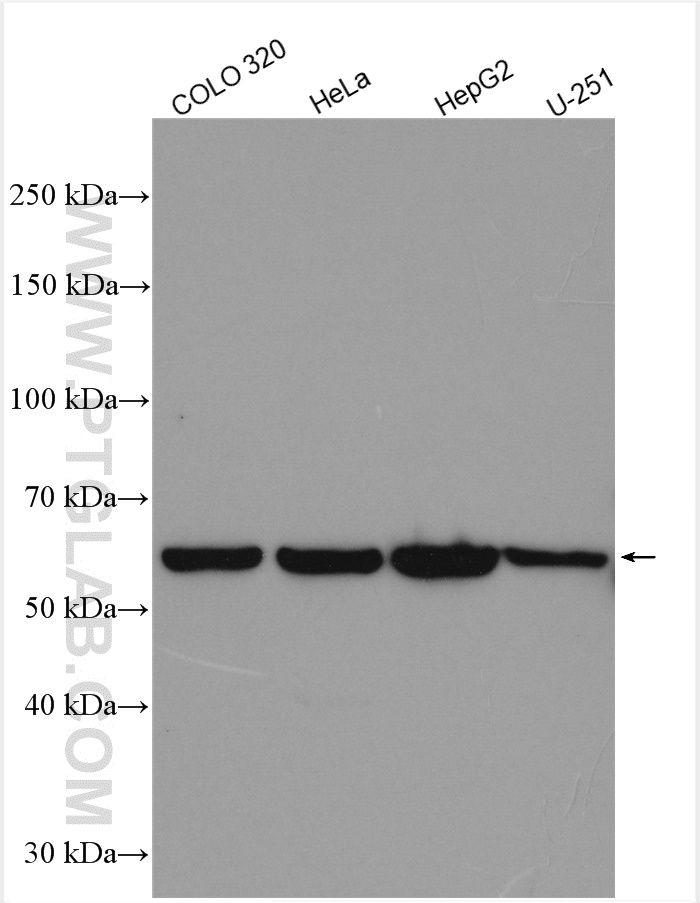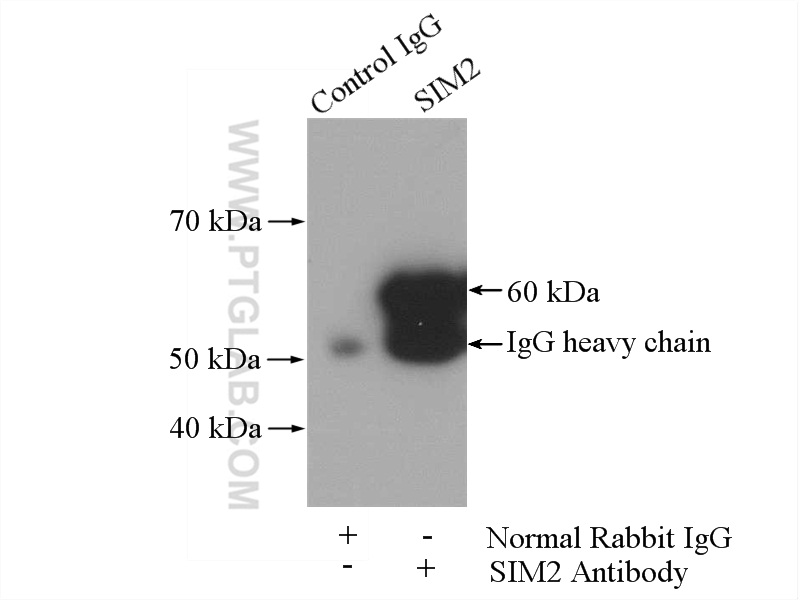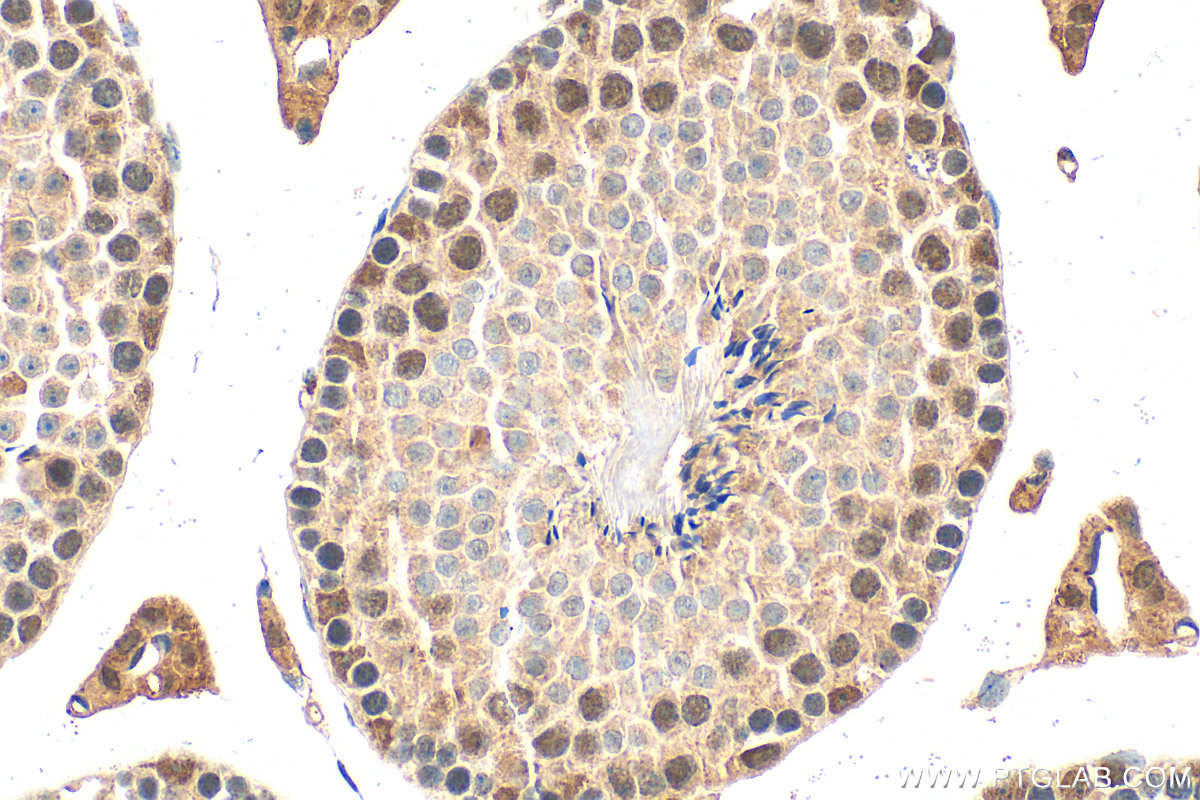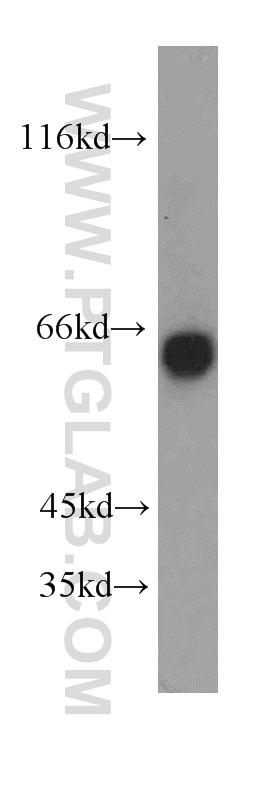验证数据展示
经过测试的应用
| Positive WB detected in | COLO 320 cells, human skeletal muscle tissue, HeLa cells, HepG2 cells, U-251 cells |
| Positive IP detected in | mouse skeletal muscle tissue |
| Positive IHC detected in | mouse testis tissue Note: suggested antigen retrieval with TE buffer pH 9.0; (*) Alternatively, antigen retrieval may be performed with citrate buffer pH 6.0 |
推荐稀释比
| 应用 | 推荐稀释比 |
|---|---|
| Western Blot (WB) | WB : 1:500-1:3000 |
| Immunoprecipitation (IP) | IP : 0.5-4.0 ug for 1.0-3.0 mg of total protein lysate |
| Immunohistochemistry (IHC) | IHC : 1:50-1:500 |
| It is recommended that this reagent should be titrated in each testing system to obtain optimal results. | |
| Sample-dependent, Check data in validation data gallery. | |
发表文章中的应用
| ChIP | See 1 publications below |
产品信息
21069-1-AP targets SIM2 in WB, IHC, IP, ChIP, ELISA applications and shows reactivity with human, mouse samples.
| 经测试应用 | WB, IHC, IP, ELISA Application Description |
| 文献引用应用 | ChIP |
| 经测试反应性 | human, mouse |
| 文献引用反应性 | human |
| 免疫原 |
CatNo: Ag15204 Product name: Recombinant human SIM2 protein Source: e coli.-derived, PGEX-4T Tag: GST Domain: 342-525 aa of BC110444 Sequence: LSLEQVSTAKSQDSWRTALSTSQETRKLVKPKNTKMKTKLRTNPYPPQQYSSFQMDKLECGQLGNWRASPPASAAAPPELQPHSESSDLLYTPSYSLPFSYHYGHFPLDSHVFSSKKPMLPAKFGQPQGSPCEVARFFLSTLPASGECQWHYANPLVPSSSSPAKNPPEPPANTARHSLVPSYE 种属同源性预测 |
| 宿主/亚型 | Rabbit / IgG |
| 抗体类别 | Polyclonal |
| 产品类型 | Antibody |
| 全称 | single-minded homolog 2 (Drosophila) |
| 别名 | Class E basic helix-loop-helix protein 15, SIM, Single minded homolog 2, Single-minded homolog 2 |
| 计算分子量 | 667 aa, 73 kDa |
| 观测分子量 | 60-64 kDa |
| GenBank蛋白编号 | BC110444 |
| 基因名称 | SIM2 |
| Gene ID (NCBI) | 6493 |
| RRID | AB_10732844 |
| 偶联类型 | Unconjugated |
| 形式 | Liquid |
| 纯化方式 | Antigen affinity purification |
| UNIPROT ID | Q14190 |
| 储存缓冲液 | PBS with 0.02% sodium azide and 50% glycerol, pH 7.3. |
| 储存条件 | Store at -20°C. Stable for one year after shipment. Aliquoting is unnecessary for -20oC storage. |
背景介绍
SIM2, also named as single-minded homolog 2, is a 667 amino acid protein, which contains 1 bHLH (basic helix-loop-helix) domain and one PAS-associated C-terminal domain. SIM2 localizes in the nucleus and has tow isoforms. Isoform SIM2 is a 73 kDa protein and Isoform SIM2S is 63 kDa protein. SIM2 as a transcription factor may be a master gene of CNS development in cooperation with Arnt. It may have pleiotropic effects in the tissues expressed during development.
实验方案
| Product Specific Protocols | |
|---|---|
| IP protocol for SIM2 antibody 21069-1-AP | Download protocol |
| WB protocol for SIM2 antibody 21069-1-AP | Download protocol |
| Standard Protocols | |
|---|---|
| Click here to view our Standard Protocols |





